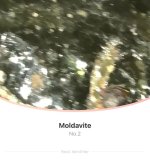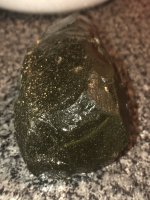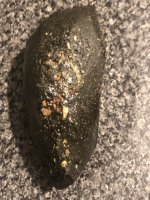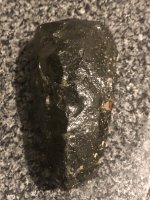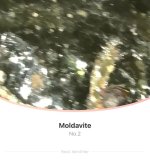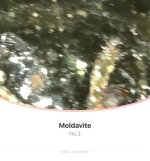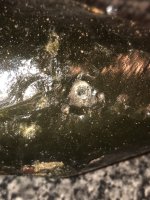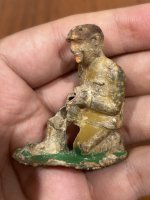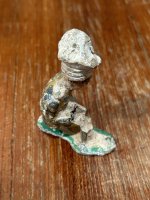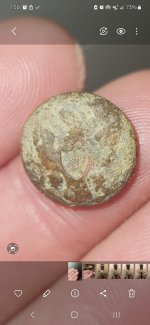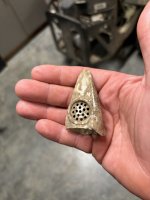Moldavite
You are using an out of date browser. It may not display this or other websites correctly.
You should upgrade or use an alternative browser.
You should upgrade or use an alternative browser.
ID help please
- Thread starter shanks
- Start date
Solution
Welcome to Tnet.
I don’t know what that is, but it’s not Moldavite. The impact location from which Moldavite originated (the Nördlinger Ries Crater in southern Germany) produced tektite glass with a unique green colouration due to trace amounts of iron. It ranges from olive green to bottle green, sometimes with a yellowish or brownish tinge but, although it can be quite dark, is never black.
You didn’t say where you found this but note also that the strewn field for Moldavite covers parts of Germany, Austria and (principally) the Czech Republic with very occasional pieces being found as far away as Scandinavia. There are other tektite types which are black, but these are principally Australites, Indochinites and Philippinites...
Red-Coat
Gold Member
Welcome to Tnet.
I don’t know what that is, but it’s not Moldavite. The impact location from which Moldavite originated (the Nördlinger Ries Crater in southern Germany) produced tektite glass with a unique green colouration due to trace amounts of iron. It ranges from olive green to bottle green, sometimes with a yellowish or brownish tinge but, although it can be quite dark, is never black.
You didn’t say where you found this but note also that the strewn field for Moldavite covers parts of Germany, Austria and (principally) the Czech Republic with very occasional pieces being found as far away as Scandinavia. There are other tektite types which are black, but these are principally Australites, Indochinites and Philippinites associated with the Australasian strewnfield.
From what I see in your pictures, the appearance is not characteristic of a tektite but is consistent with man-made slag glass.
I don’t know what that is, but it’s not Moldavite. The impact location from which Moldavite originated (the Nördlinger Ries Crater in southern Germany) produced tektite glass with a unique green colouration due to trace amounts of iron. It ranges from olive green to bottle green, sometimes with a yellowish or brownish tinge but, although it can be quite dark, is never black.
You didn’t say where you found this but note also that the strewn field for Moldavite covers parts of Germany, Austria and (principally) the Czech Republic with very occasional pieces being found as far away as Scandinavia. There are other tektite types which are black, but these are principally Australites, Indochinites and Philippinites associated with the Australasian strewnfield.
From what I see in your pictures, the appearance is not characteristic of a tektite but is consistent with man-made slag glass.
Upvote
2


Upvote
1
- Thread starter
- #4
I respect what your sayin but it is green and id rather not say where I got it at the moment. Thanks for your feed backWelcome to Tnet.
I don’t know what that is, but it’s not Moldavite. The impact location from which Moldavite originated (the Nördlinger Ries Crater in southern Germany) produced tektite glass with a unique green colouration due to trace amounts of iron. It ranges from olive green to bottle green, sometimes with a yellowish or brownish tinge but, although it can be quite dark, is never black.
You didn’t say where you found this but note also that the strewn field for Moldavite covers parts of Germany, Austria and (principally) the Czech Republic with very occasional pieces being found as far away as Scandinavia. There are other tektite types which are black, but these are principally Australites, Indochinites and Philippinites associated with the Australasian strewnfield.
From what I see in your pictures, the appearance is not characteristic of a tektite but is consistent with man-made slag glass.
Attachments
Upvote
0
Solution
minerjosh
Full Member
- Apr 5, 2017
- 189
- 629
- Detector(s) used
- GPX4500/Nox800
- Primary Interest:
- All Treasure Hunting
My first thought was slag with some rock pieces that didn’t fully smelt? I’m not an expert at all, I watched some mmbm videos where he is doing some smelting experiments and green slag is very normal
Upvote
1
Users who are viewing this thread
Total: 2 (members: 0, guests: 2)


